Blog
July 07, 2014
The Butterflies of Rubondo Island National Park
By Habibu Kissio, Rubondo Island Camp Guide
Rubondo Island National Park covers a total area of 456.8 sq km of which 236.8 sq km is dry land. There are also 11 smaller islets and 220 sq km of water.
The park contains unique flora and fauna with a mosaic of different primary forests creating a dense cover of over 80% of the Island. This is interspersed by papyrus swamp, rocky grassland, open woodland, grassland and sandy lakeshore.
The park structure of different vegetation, geographical location and very pleasant weather is a paradise to much wildlife, including an abundance of Lepidoptera (Butterflies and Moths), which are one of my favourite subjects.
Butterflies are attracted by many factors, including availability of good cover, water, plants for food and to lay their eggs; all these factors exist in Rubondo National Park.
Rubondo is home to many species of Lepidoptera, and some of them are endemic to the Island. Since the establishment of Asilia’s camp on the island, many species of butterflies have been recorded and photographed.
Feeding and Food of Butterflies:
As larvae, the vast majority of butterflies feed on plant matter. Choice of larval food is often highly specialised and in some cases restricted to a single species. As a result, butterfly distribution is influenced by the availability of food for the larvae.
Most butterflies are active during the day [diurnal] and they start to become very active when the sun is not too hot. Butterflies can be observed in the morning and at sunset on forest edges, on flowers, in the canopy, alongside marshes, on animal dung, rotten fruit and dead animals, demonstrating that they utilise a huge variety of food sources.
These are some species of Butterflies of Rubondo Island National Park that have been observed through various activities and field studies:
African Monarch (Danaus chrysippus aegytus). These orange and black butterflies can be seen nearly everywhere on the island, gliding slowly and lazily from one flower to another. The orange and black is known as a warning colour, as they are poisonous from the alkaloids [toxins] they extract from toxic plants during their larval stage. Keeping this toxicity their entire lives, this is the reason why they fly lazily, as nobody can eat them!
2. Friar (Amuaris ochlea ochlea) Conspicuously marked with black and white, the males have less white on the wings than the females, which have a more rounded wing. They love shade and are seldom found in the open, except nearby attractive flowers, where they sometimes swarm. They can be seen everywhere within the forest flap gliding slowly because they are poisonous to predators. When disturbed, they flash out a yellow soft brush at their rear end that emits an unpleasant smell to deter predators. They can be observed in open areas within the forest mixed up together with other species such as Novices, Laymans and Chiefs, sucking alkaloids from toxic plants.
3. Acreas are medium size butterflies that can be found flying slowly, close to the ground and above the canopy searching for alkaloids from toxic plants. Large numbers of different species of Acrea can be seen in various habitats like forest, grassland forest, open grassland, undergrowth forest and along the forest edges. Acreas are brightly coloured to warn their predators that they are toxic and cannot be eaten, which is why they can fly around slowly. The species of Acreas on the Island are abundant and need to be very carefully examined to identify them in the field – such as Garden Acrea; (Acrea Horta), Rainforest Acrea; (Acrea boois boois), Pale Yellow Acrea; (Hyalites obeira burni) and Dusky Acrea; (Pardosis esebria esebria).
4. Leopard or Phalantas. These have small yellow and black spots on their wings, thus their name. They are active on sunny days mixed in with other species at pools of water on the roadside, sucking the water and squirting fine, silken threads of it from their rear. They also can be seen on animal dung feeding from the liquids it contains. Two species have been recorded on the island; the African Common Leopard;(Phalanta phalanta), and the Forest Leopard; (euritys eurytis).
5. Charaxes or Emperors are one of the most remarkable butterflies to see on the island. These are medium sized to very large, robust, showy, fast flying butterflies, usually inhabiting the upper canopy. Males are strongly territorial and are usually found perched on exposed leaves or twigs, frequently darting out to chase intruders. Females are found closer to food plants. Adults seldom feed on nectar, preferring tree sap (dozens may be seen at sucking holes; where beetle larvae have bored into the tree). Charaxes can also be observed on rotten fruit and animal dung, fighting for the space to feed where they can get vital minerals such calcium and iodine. Males are often found drinking at mud holes. Charaxes can be seen easily after rain sucking water from roadside puddles, and if you take a close look you will notice that they suck in the water and then squirt it out from their rear end. The Emperors you may see often during your visit to the island are Pearl Emperor; (Charaxes varanes varanes), Green-veined Emperor; (Charaxes candiope), Giant Emperor; (Charaxes castor), Large Blue Emperor; (Charaxes bohemani), Blue-spotted Emperor;(Charaxes Cithaeron) and Black Bordered Emperor; (Charaxes pollux).
6. Forest Queen; Euxanthe wakefieldi. These are large tailless butterflies, and the sexually dimorphic females are black with spots of white and a bright yellow abdomen. The red, black and white males are often found on hilltops, while females stay near food plants. These butterflies are forest dwellers, with a fast-flying swooping motion.
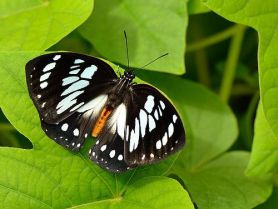
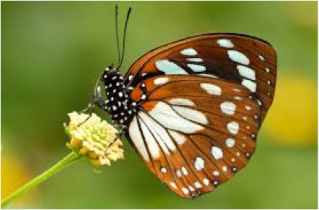
7. Common Sailor; Neptis laeta. Small to medium butterflies with distinctive black on white markings. These butterflies can be seen everywhere on the island flying and sailing with few wing beats above small trees on forest edges. Most insectivorous birds such as Pygmy Kingfishers and White Throated Kingfishers prey on these butterflies.
A mating pair of Common Sailors- the female is on the left.
8. Diadems or Hyolimnas. Conspicuous, colourful butterflies, flying fast and strongly with a characteristic flap-glide action. Fond of fermented fruits and flowers, they are highly sexually dimorphic: males are black with white blotches while females are more robustly built and have a more powerful flight like the African Monarchs that they mimic. Two species have been recorded on Rubondo; the Common Diadem; (Hypolimnus misippus) and the Variable Diadem; (Hypolimnas anthedon wahlbergii).
9. Common Mother-of Pearl; (Salamis parhassus). These are large butterflies with squared-off wing margins and prominently hooked wingtips, with an untidy flapping flight. They are wary, and can move very quickly when attacked.They often settle on prominent leaves along forest edges, and in summer they are found all over the forest. During the dry season they concentrate on water edges, well camouflaged under large leaves. They are very fond of flowers. They are very aggressive to other butterflies, and have been observed fighting and chasing other species away from food or a mud puddle by using their powerful wings.
10. Swallowtail or Paillionidaes. These are very large butterflies that can be found all over the forest. Males are often found on the forest edges inspecting flowers and females spend most of their time near food plants. Despite their names, Swallowtails are tailless except for the male Mocker Swallowtail, which is unmistakable due to the unique appearance of those two long tails and its bright, creamy yellowish colour. Other species of swallowtail that have been recorded on the Island are the Citrus Swallowtail; (Papilio demodecus), and the Green-banded Swallow tail; (Papilio nireus).
![]()

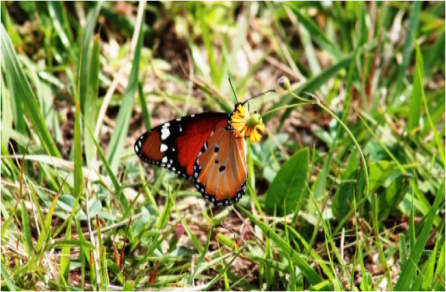
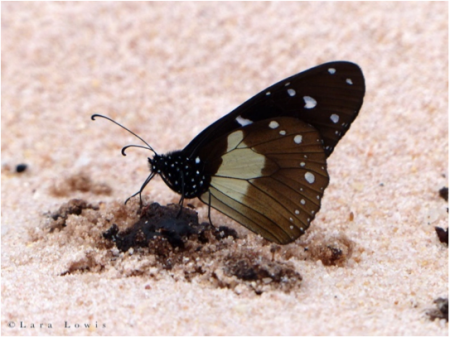
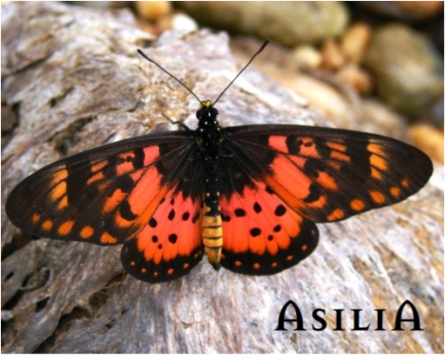
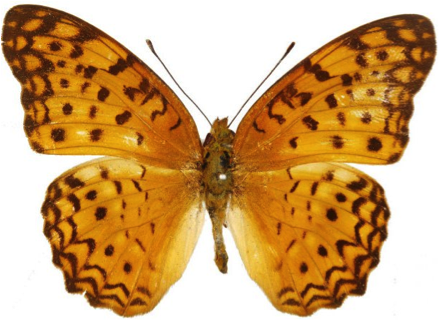
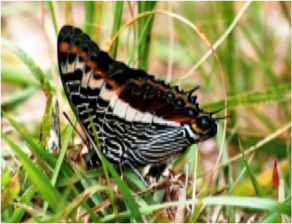
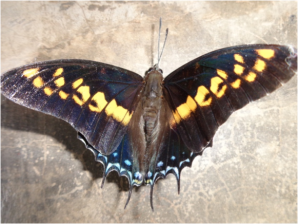
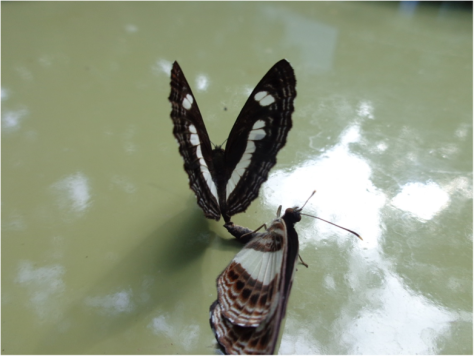
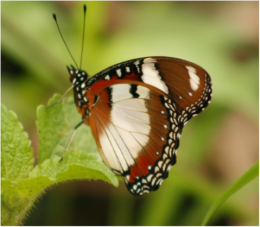
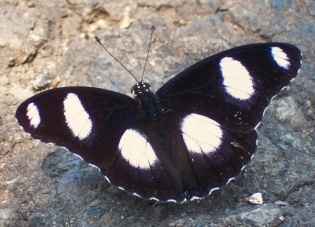
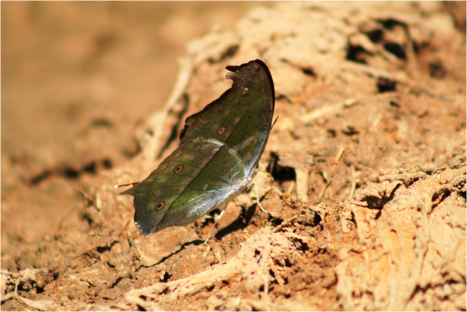
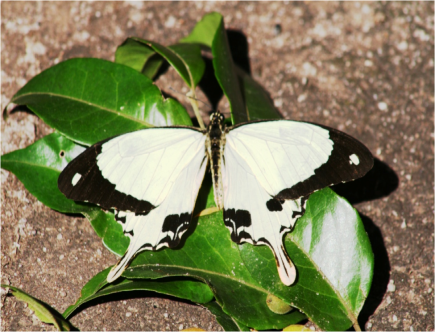
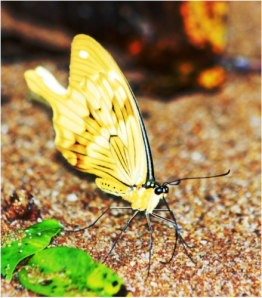




































Add comment
By Habibu Kissio, Rubondo Island Camp Guide
Rubondo Island National Park covers a total area of 456.8 sq km of which 236.8 sq km is dry land. There are also 11 smaller islets and 220 sq km of water.
The park contains unique flora and fauna with a mosaic of different primary forests creating a dense cover of over 80% of the Island. This is interspersed by papyrus swamp, rocky grassland, open woodland, grassland and sandy lakeshore.
The park structure of different vegetation, geographical location and very pleasant weather is a paradise to much wildlife, including an abundance of Lepidoptera (Butterflies and Moths), which are one of my favourite subjects.
Butterflies are attracted by many factors, including availability of good cover, water, plants for food and to lay their eggs; all these factors exist in Rubondo National Park.
Rubondo is home to many species of Lepidoptera, and some of them are endemic to the Island. Since the establishment of Asilia’s camp on the island, many species of butterflies have been recorded and photographed.
Feeding and Food of Butterflies:
As larvae, the vast majority of butterflies feed on plant matter. Choice of larval food is often highly specialised and in some cases restricted to a single species. As a result, butterfly distribution is influenced by the availability of food for the larvae.
Most butterflies are active during the day [diurnal] and they start to become very active when the sun is not too hot. Butterflies can be observed in the morning and at sunset on forest edges, on flowers, in the canopy, alongside marshes, on animal dung, rotten fruit and dead animals, demonstrating that they utilise a huge variety of food sources.
These are some species of Butterflies of Rubondo Island National Park that have been observed through various activities and field studies:
African Monarch (Danaus chrysippus aegytus). These orange and black butterflies can be seen nearly everywhere on the island, gliding slowly and lazily from one flower to another. The orange and black is known as a warning colour, as they are poisonous from the alkaloids [toxins] they extract from toxic plants during their larval stage. Keeping this toxicity their entire lives, this is the reason why they fly lazily, as nobody can eat them!
2. Friar (Amuaris ochlea ochlea) Conspicuously marked with black and white, the males have less white on the wings than the females, which have a more rounded wing. They love shade and are seldom found in the open, except nearby attractive flowers, where they sometimes swarm. They can be seen everywhere within the forest flap gliding slowly because they are poisonous to predators. When disturbed, they flash out a yellow soft brush at their rear end that emits an unpleasant smell to deter predators. They can be observed in open areas within the forest mixed up together with other species such as Novices, Laymans and Chiefs, sucking alkaloids from toxic plants.
3. Acreas are medium size butterflies that can be found flying slowly, close to the ground and above the canopy searching for alkaloids from toxic plants. Large numbers of different species of Acrea can be seen in various habitats like forest, grassland forest, open grassland, undergrowth forest and along the forest edges. Acreas are brightly coloured to warn their predators that they are toxic and cannot be eaten, which is why they can fly around slowly. The species of Acreas on the Island are abundant and need to be very carefully examined to identify them in the field – such as Garden Acrea; (Acrea Horta), Rainforest Acrea; (Acrea boois boois), Pale Yellow Acrea; (Hyalites obeira burni) and Dusky Acrea; (Pardosis esebria esebria).
4. Leopard or Phalantas. These have small yellow and black spots on their wings, thus their name. They are active on sunny days mixed in with other species at pools of water on the roadside, sucking the water and squirting fine, silken threads of it from their rear. They also can be seen on animal dung feeding from the liquids it contains. Two species have been recorded on the island; the African Common Leopard;(Phalanta phalanta), and the Forest Leopard; (euritys eurytis).
5. Charaxes or Emperors are one of the most remarkable butterflies to see on the island. These are medium sized to very large, robust, showy, fast flying butterflies, usually inhabiting the upper canopy. Males are strongly territorial and are usually found perched on exposed leaves or twigs, frequently darting out to chase intruders. Females are found closer to food plants. Adults seldom feed on nectar, preferring tree sap (dozens may be seen at sucking holes; where beetle larvae have bored into the tree). Charaxes can also be observed on rotten fruit and animal dung, fighting for the space to feed where they can get vital minerals such calcium and iodine. Males are often found drinking at mud holes. Charaxes can be seen easily after rain sucking water from roadside puddles, and if you take a close look you will notice that they suck in the water and then squirt it out from their rear end. The Emperors you may see often during your visit to the island are Pearl Emperor; (Charaxes varanes varanes), Green-veined Emperor; (Charaxes candiope), Giant Emperor; (Charaxes castor), Large Blue Emperor; (Charaxes bohemani), Blue-spotted Emperor;(Charaxes Cithaeron) and Black Bordered Emperor; (Charaxes pollux).
6. Forest Queen; Euxanthe wakefieldi. These are large tailless butterflies, and the sexually dimorphic females are black with spots of white and a bright yellow abdomen. The red, black and white males are often found on hilltops, while females stay near food plants. These butterflies are forest dwellers, with a fast-flying swooping motion.
7. Common Sailor; Neptis laeta. Small to medium butterflies with distinctive black on white markings. These butterflies can be seen everywhere on the island flying and sailing with few wing beats above small trees on forest edges. Most insectivorous birds such as Pygmy Kingfishers and White Throated Kingfishers prey on these butterflies.
A mating pair of Common Sailors- the female is on the left.
8. Diadems or Hyolimnas. Conspicuous, colourful butterflies, flying fast and strongly with a characteristic flap-glide action. Fond of fermented fruits and flowers, they are highly sexually dimorphic: males are black with white blotches while females are more robustly built and have a more powerful flight like the African Monarchs that they mimic. Two species have been recorded on Rubondo; the Common Diadem; (Hypolimnus misippus) and the Variable Diadem; (Hypolimnas anthedon wahlbergii).
9. Common Mother-of Pearl; (Salamis parhassus). These are large butterflies with squared-off wing margins and prominently hooked wingtips, with an untidy flapping flight. They are wary, and can move very quickly when attacked.They often settle on prominent leaves along forest edges, and in summer they are found all over the forest. During the dry season they concentrate on water edges, well camouflaged under large leaves. They are very fond of flowers. They are very aggressive to other butterflies, and have been observed fighting and chasing other species away from food or a mud puddle by using their powerful wings.
10. Swallowtail or Paillionidaes. These are very large butterflies that can be found all over the forest. Males are often found on the forest edges inspecting flowers and females spend most of their time near food plants. Despite their names, Swallowtails are tailless except for the male Mocker Swallowtail, which is unmistakable due to the unique appearance of those two long tails and its bright, creamy yellowish colour. Other species of swallowtail that have been recorded on the Island are the Citrus Swallowtail; (Papilio demodecus), and the Green-banded Swallow tail; (Papilio nireus).